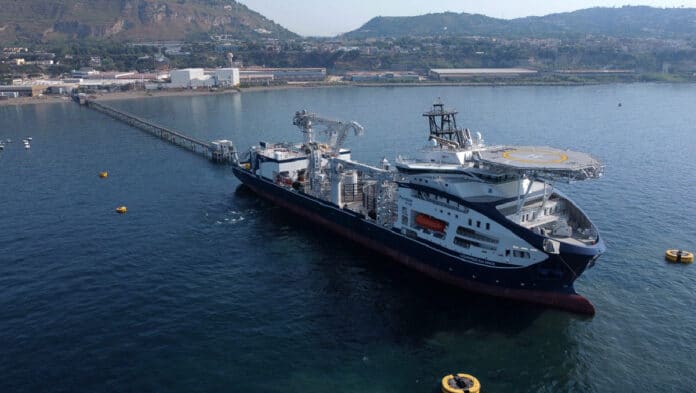Italy-based cable manufacturing company Prysmian has successfully completed the installation and HV testing activities of its 1,400 km of submarine and land power cables for the world’s longest onshore and subsea HVDC interconnector.
Called Viking Link, the interconnector is a 1400 MW high voltage direct current (DC) electricity link between the British and Danish transmission systems connecting at Bicker Fen substation in Lincolnshire and Revsing substation in southern Jutland, Denmark.
The project is a collaboration between the National Grid of the UK and Energinet of Denmark. It involves constructing converter sites and installing onshore and offshore cables in each country that are then connected to the substations.
In August 2019, National Grid and Energinet awarded Prysmian a contract – worth approximately €700 million ($755.8 million) – to design, manufacture, and installation of the world’s longest interconnector. The contract included covering all the 1,250 km of cables for the submarine route and approximately 135 km of land cables on the UK side for the 4 Lots awarded to Prysmian out of a total of 5 Lots.
Viking Link will be approximately 765 km (475 miles) long, of which 650 km (400 miles) will be submarine high voltage direct current (DC) cables that will pass through Danish, German, Dutch, and British waters. The cable is made of copper, steel, paper, and plastic and weighs about 40 kg per meter.
The HVDC interconnector will operate at ±525 kV DC and allow up to 1,400 MW of power to be transferred between the two countries, passing through UK, Dutch, German, and Danish waters.
Once complete, it will have the ability to share enough green electricity to power up to 1.4 million UK homes, the company said.
Prysmian used the world’s most advanced cable-lying vessel, Leonardo da Vinci, to complete the Viking Link project. This vessel has 7,000- and 10,000-ton rotating platforms – the highest carousel capacity. It can store and install longer cable lengths, requiring fewer joints and installation campaigns, significantly improving overall project efficiency.
The whole project is due to be completed by the end of the year. When it is completed, it will enable the exchange of clean energy between the two countries, supporting their journey to net zero.
